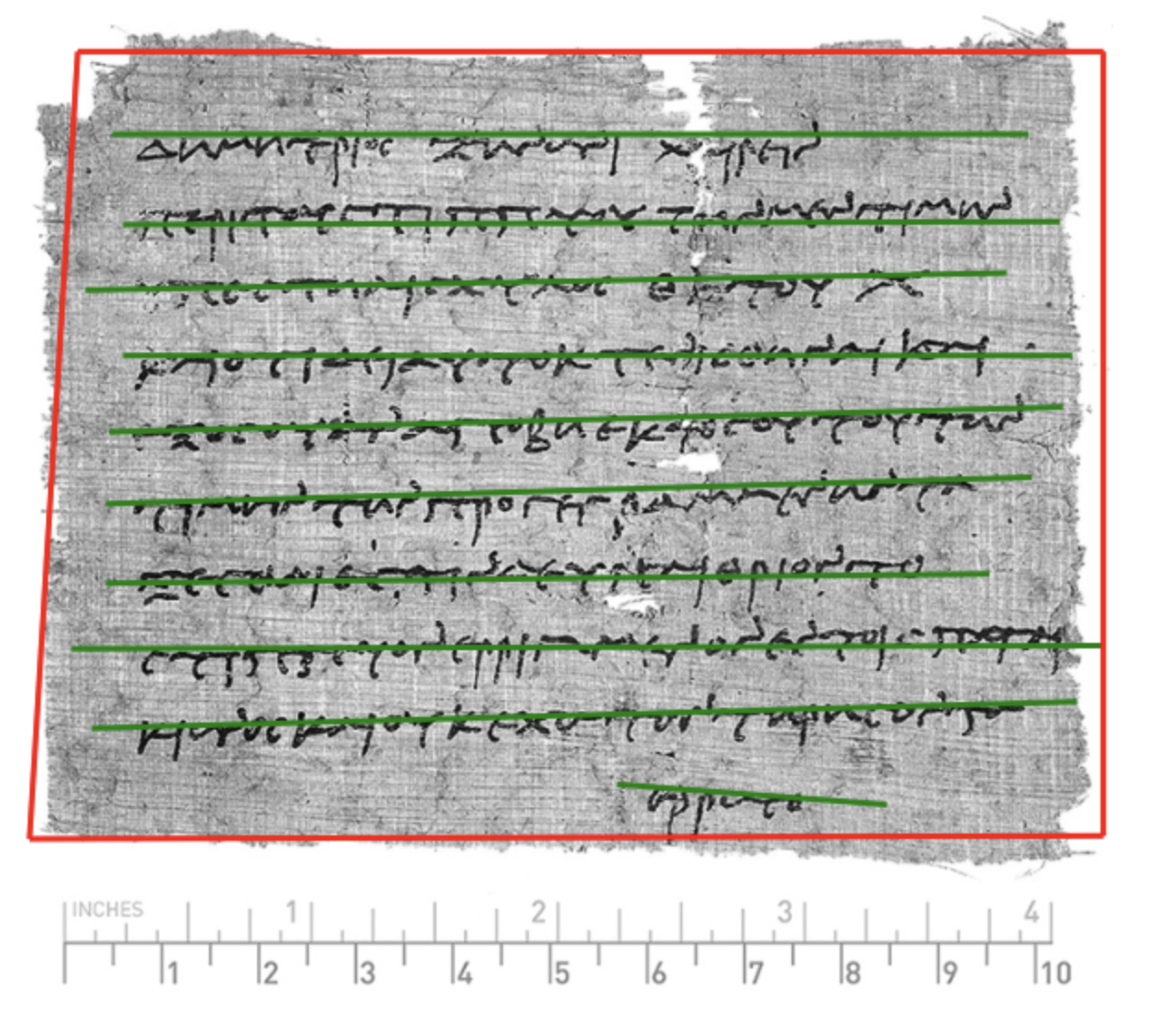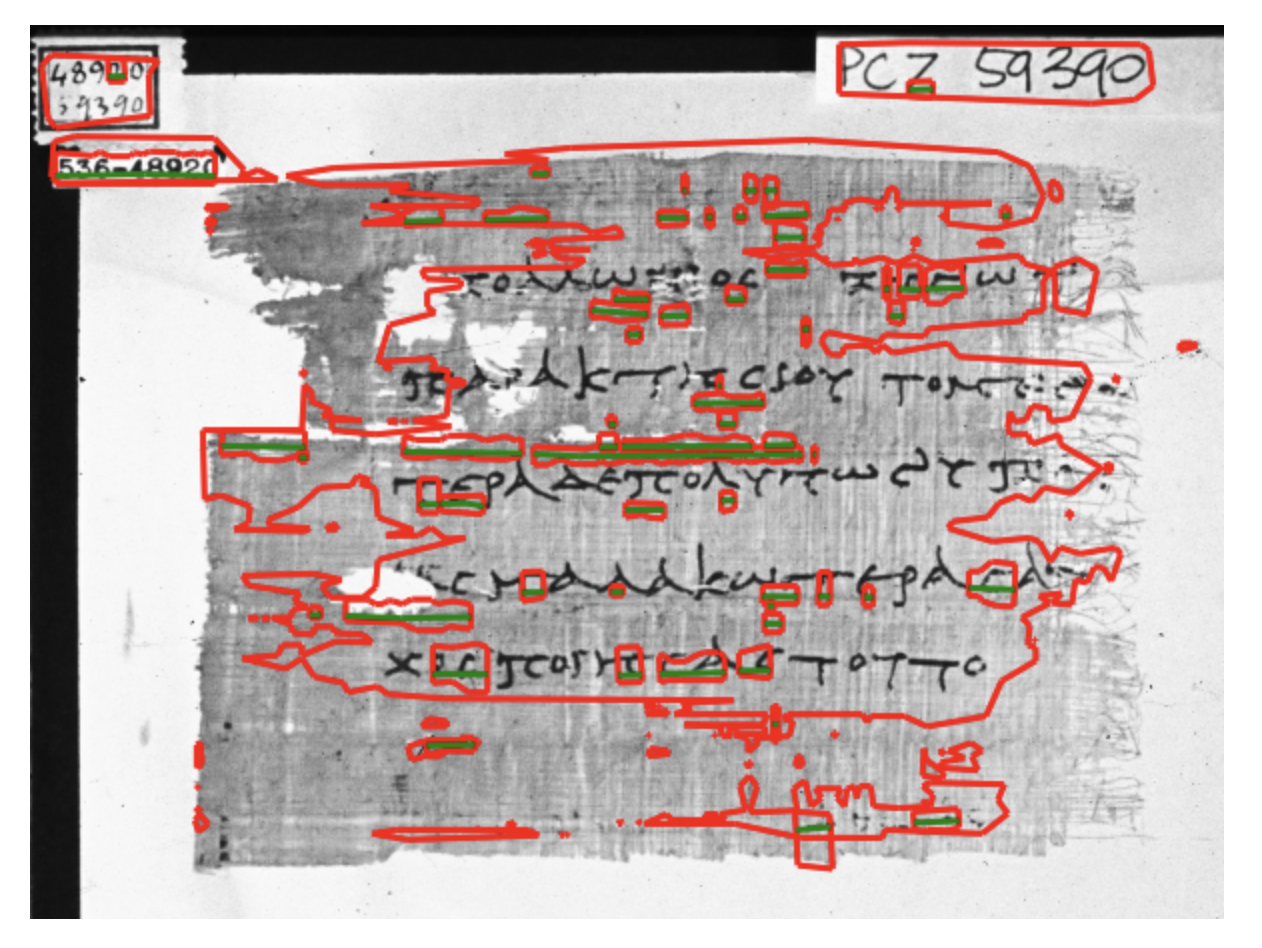QR-Generator
The purpose of tool this tool is to create a visualization by providing the two markers and generating the QR-Code. Hence, this isn't directly involved in the process of displaying data in the augmented reality context, but is essential to even make these visualizations possible.
The QR-Code
Centerpiece of this tool is, as the name suggests, the generation of the QR-Code. This QR-Code will always link to the AR part of the project using the base URL
https://thorsten-trinkaus.github.io/PapyriAR/AR/
In addition to this URL, the QR-Code needs to store enough information, such that the AR part can identify the used papyrus. For this, we use the "data" query parameter:
https://thorsten-trinkaus.github.io/PapyriAR/AR/?data=<Identifying-Info>
Here, the Identifying-Info depends on the method used within the tool.
- If the Trismegistos method is used, we only need to save the Trismegistos identifier, as from there, we can get both .xml files from the repository. Obviously, this method doesn't allow for any access to the eScriptorium data, which makes it impossible to correctly display the transcription. Therefor, visualizations created through this method will only display meta data. A URL would look like this:
https://thorsten-trinkaus.github.io/PapyriAR/AR/?data=2020
- If the eScriptorium method is used, the amount of needed data is much higher. As stated in the Introduction, the eScriptorium .xml file needs to be provided by the user and can't be accessed at the runtime of the AR part. Hence, all the needed data from this file needs to be stored in the URL. We store the data in the form of:
TrismegistosIdentifier_PixelWidth-of-the-image_PixelHeight-of-the-image_Width-of-line1!xPos-of-line1!yPos-of-line1!Rotation-of-line1_line2_...
An example for the eScriptorium method would look like this:
https://thorsten-trinkaus.github.io/PapyriAR/AR/?data=2140_1587_2296_1064!855!358.5!-2.53_904!822!484.5!-1.71_1134!929!609!-2.22_1031!862.5!750.5!-0.94_621!662.5!890.5!-1.57_1170!913!1010.5!-1.71_1099!884.5!1209.5!-0.26_828!766!1315.5!-0.35_964!839!1450!0.71_604!871!1590.5!-0.662140_1587_2296_1064!855!358.5!-2.53_904!822!484.5!-1.71_1134!929!609!-2.22_1031!862.5!750.5!-0.94_621!662.5!890.5!-1.57_1170!913!1010.5!-1.71_1099!884.5!1209.5!-0.26_828!766!1315.5!-0.35_964!839!1450!0.71_604!871!1590.5!-0.66
To actually generate the QR-Code we use the framework qr-code-styling and render the generated Code to an HTMLImageElement, which than can be downloaded as a .png file.
URL shortener
When you take a look at the example URL for the eSciptorium example, you may realise that these URLs can get pretty big pretty fast, which also creates big and complex QR-Codes. Eventhough we can generate these QR-Codes, they can get so complex that they aren't easy to scan anymore, which defeats the purpose of the QR-Code.
We use the open-source URL shortener spoo.me to counteract this problem. This service helps to keep the URLss as short as possible, which makes for smaller and more readable QR-Codes. This is an optional choice to the user, because we don't controll the service provided by spoo.me, which isn't perfect.
Downloads
We allow the user to download the two markers .png files at any time, as they are just static images, that stay the same for all the papyri.
The QR-Code obviously first needs to be generated, before allowing the user to download it.
We also offer the option to download both the two markers and the QR-Code together as a single .pdf file. The goal of this option is to make printing the components, needed for a visualization, as easy as possible. To create a PDF and to copy the HTMLImageElements into the PDF, we use the framework jsPDF. This framework also directly handles the download of the .pdf file.
eScriptorium
This section doesn't realy matter, but provides some quality of life improvements for the user. When the user uploads their eScriptorium .xml file, we check the file and make sure the file can acctually be used for this project. As the eScriptorium is still work in progress, there are files that can't be used simply because the data inside these files is wrong. An example for this would be:
| can be used | can't be used |
|---|---|
 |  |
The images of "Demetrios a Zenon" and "Kritias a Zenon" are licensed by the Heidelberger Gesamtverzeichnis der griechischen Papyrusurkunden Ägyptens under CC BY 3.0.
For more information about the generator, look at generator.js.